The first thing I remarked upon when we walked into Lupo’s was that it felt really glamorous – and that was before we’d even got up the stairs to the actual restaurant space.
I can’t remember exactly what music was playing on that stairway, but it was something that made me feel decidedly louche – as if I was about to dine with my lover in a little place we’d stumbled upon in the back streets of Sicily, before sliding onto our Vespa for the short ride back to my palazzo in the sun.
Lupo’s is so convincingly transformative that it’s easy to forget you’re actually next to the New Picture House cinema in St Andrews, so much so that three of their cocktails might make you consider re-enacting the beach scene in From Here To Eternity – if only the Scottish sirocco would finally stop blowing on the West Sands.
It’s a clever thing to set the scene for La Dolce Vita so adroitly just from some artfully-framed photos of Audrey Hepburn and Gregory Peck in Roman Holiday, and Salvador Dali and his wife Gala looking intoxicatingly mad.
I remember already thinking that Lupo’s was probably my kind of place.
Lounge music plays as you climb the stairs, the photos seem to offer a gateway to another world of Rat Packs, risotto alla Milanese and Ravello, and instantly your spirits soar.
Smart minds have been at work here and they’ve made a wonderful pearl of mildly decadent glamour out of a somewhat unglamorous shell.
I learned at a very early age that there can never be too much glamour in life, an adage I still cling to now. Even when I was unemployed, I’d spend part of my benefit money on Vogue magazine and the new David Bowie single, while resenting giving my mum any money for my food.
My most desperate search for an adolescent glamour fix saw me travelling on the bus to Forfar to see Marc Bolan’s film Born To Boogie, wearing a top hat I’d found in Dens Road Market and some glitter on my cheeks. I was 14.
As an adult who was lucky enough to travel the world with an expense account and a restaurant guide as my trusty props, I learned that glamour can be found in the most unexpected places – a seafood shack on the beach at Santa Monica, a secret souvlaki garden in Mykonos, or a hole in the wall soup place on 55th Street in New York.
There, owner Al Yeganeh would dispense soup with all the charm of someone who really despised the public, something he confirmed in an article in The New Yorker where he was quoted as saying “I tell you, I hate to work with the public. My philosophy is ‘the customer is always wrong and I’m always right’”.
A regular would quote the rules for soup survival to you as you stood innocently and obediently in line – “just don’t talk, do what he says”.
I thought this was the most glamorous idea ever because you instantly felt like a New Yorker and also it felt like you were in a film – all for the cost of a paper cup of soup and the odd insult being thrown your way.
Glamour doesn’t need to be the Ritz or the Savoy. It can be anywhere, even in the gutter – and yet sometimes it can be remarkably hard to find. Central Dundee restaurants are pitifully short of glamour, Jute at DCA, Franks and Gallery 48 being the few rare exceptions.
Perth and St Andrews offer more hope for the budding Iris Apfel’s among us, with the latter positively groaning with glamourous desire under its academic cloak.
Lupo’s in St Andrews
The clever thing about Lupo’s is that it achieves glamour with just an artful use of paint, an imaginative use of space and some good lighting. I might be wrong here, but I think this gilded conversion might not have cost that much – but the effect is great.
This is actually an 80s idea of interiors, artfully mixed into something that feels fresh and inviting and, as such, it couldn’t really be more now.
The return of Stranger Things has meant that eBay has reported a 400% increase in 1980s’ show-related objects, but something you can’t actually buy online is the paint techniques that helped make that decade so noteworthy and made paint expert Jocasta Innes a household name.
Should you want to get an idea of what was so ubiquitous in the design-driven decade of the 1980s then the sponging and rag-rolling paint techniques on show here at Lupo’s would be as good a place to start as any.
Used 40 years ago, and now revived here to create a rustic, aged patina on walls and the bar, this technique works because it’s combined with other decidedly 80s’ touches like swagged curtains and paint borders to create an environment that’s distinctly fun, relaxing and strangely comforting.
Maybe it’s because I’ve been harking back to the 80s so much recently that the huge ceiling light, positively engorged in plastic flowers, looks just the ticket here.
The truth is I loved this space so much.
In fact, I loved it so much I said a silent prayer to Bacchus that the food and service wouldn’t be a disastrous let down.
I’m happy to report that both were ace.
The food
On the night we dined there was a special set menu on offer, named after the film La Dolce Vita.
At £39.50 for four courses it seemed like quite a good deal, with antipasti including burrata and fig and bresaolo, and main courses – secondi – including tagliata di manzo (£5 supplement) and penne alla vodka, a 70’s throwback that’s always welcome with me.
A primo dish of pappardelle al tartufo sounded appealing, especially as it came with a quote from Fellini himself – “life is a combination of magic and pasta”.
Enticing as it was, however, we chose from the main a la carte menu, mainly because set menus often only work if everyone on the table orders them.
There was plenty to choose from on the regular menu, which offered an enticing combination of classics and more unusual dishes.
Starting with some Italian breads with Tuscan olive oil and balsamic (£3.50), I already wanted to order the polenta fritta (£5.50) from the snack menu and the panzanella (£11) from a selection of just two salads.
But, as there’s a limit to what even I can eat in the interests of research and gluttony, I ordered the Calabrian-style scallops with ‘nduja, pea purée and crispy speck (£13) and it was delicious.
Scallops and pea purée is itself a bit of a 1980s’ classic, a dish I always used to order when Rowley Leigh invented it at Kensington Place in London.
It still tastes classic and wonderful (a recipe for it is in Leigh’s book No Place Like Home) and it also looks highly appealing on the plate.
David’s starter of burrata with roasted fig and beetroot, toasted hazelnuts and balsamic (£9) was as pretty as a chiaroscuro, the white of the mozzarella (substituted due to the lack of burrata) contrasting beautifully with the yellow and red beets, the pink figs and the intense dark blobs of balsamic. Simple, but great.
My main course of porchetta (£21) was so, so good – pork belly stuffed with roasted fennel, leek and thyme, served on creamed potato with some tenderstem broccoli, this was a dish to savour for the richness of the meat, the joy of the fat and the ambrosial quality of the mash. Top stuff.
David’s risotto was also a delight (£16). Heady with the aroma of black truffle, this nectar was served simply, allowing the combination of truffle, mascarpone and parmesan to work their supreme alchemy.
This risotto was well cooked, the grain still al dente and the dish itself creamy and harmonious – although a quick stolen spoonful led me to comment that I like my risottos to be just a fraction wetter, either from the last-minute addition of some extra butter or perhaps some Vermouth.
Whatever your views are on the gloopiness of risottos, this was a near textbook example of a dish that is often easier to cook at home than in a restaurant, given that it requires patience and time to achieve the optimum balance of rice and liquid.
I don’t know if it was the thought of the artery clogging going on inside our bodies that made us pause mid flow to order some grilled artichoke hearts with broad beans, chicory, peas, rocket and mint (£12.50) but this dish proved a wonderfully vibrant green contrast to the deep ballast of our main courses.
Desserts were great and we settled into them like two happy old timers, delighted to find ourselves on the home run, with absolutely nothing to moan about.
Our excellent waitress Vicky mentioned to me that the tiramisu (£8) was her favourite but that the portion was quite big. I think I paused for a second to feel the fear of confessing to my personal trainer, and then ordered it anyway. It was delicious, a vast slab of molten, creamy delight that was probably the best tiramisu I’ve had outside Italy.
David ordered the butterscotch budino (£8) because he’d googled the word and realised that it was basically a rich creamy custard that was redolent of childhood, given that we 70s kids grew up on Ambrosia rice pudding and butterscotch Angel Delight. He went very quiet while eating it, which can sometimes be a sign of something amiss – but here the silence equated to that bliss you get when all seems right with the world.
The verdict
Lupo’s is a bit of a find – great food, great surroundings and excellent service.
The only thing I can fault it on is that a discretionary service charge of 10% is added to the bill, along with some overcomplicated explanation about how it’s split between food and wine. We were told that we could deduct it should we wish to.
That in itself is fine, as I always tip more than that anyway. But when paying we were then told that we could add further service should we wish to – a situation that was slightly embarrassing because two conversations about tipping is at least one too many in my book. This is Scotland, not New York!
Either Lupo’s should raise the discretionary service charge to 12.5% or drop the whole thing and allow the customer to tip whatever they want, given that the service here is pretty immaculate anyway – and you’d hope customers would want to reward that.
That small gripe aside, Lupo’s is a complete joy and I can’t wait to return.
Information
Address: Lupo’s, 119 North Street, St Andrews, KY16 9AD
T: 01334 475950
Price: Snacks from £3.50; starters from £9; mains from £15; dessert from £6.50.
Scores:
- Food: 5/5
- Service: 5/5
- Surroundings:
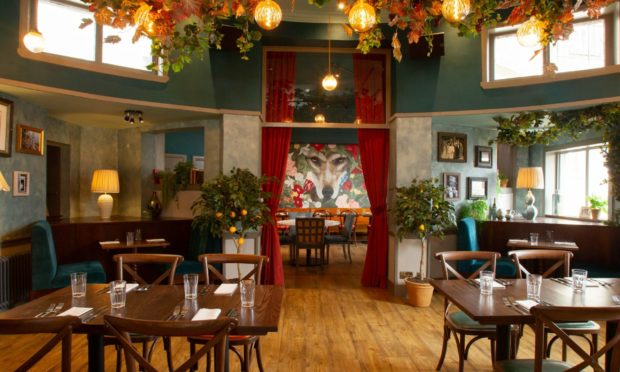
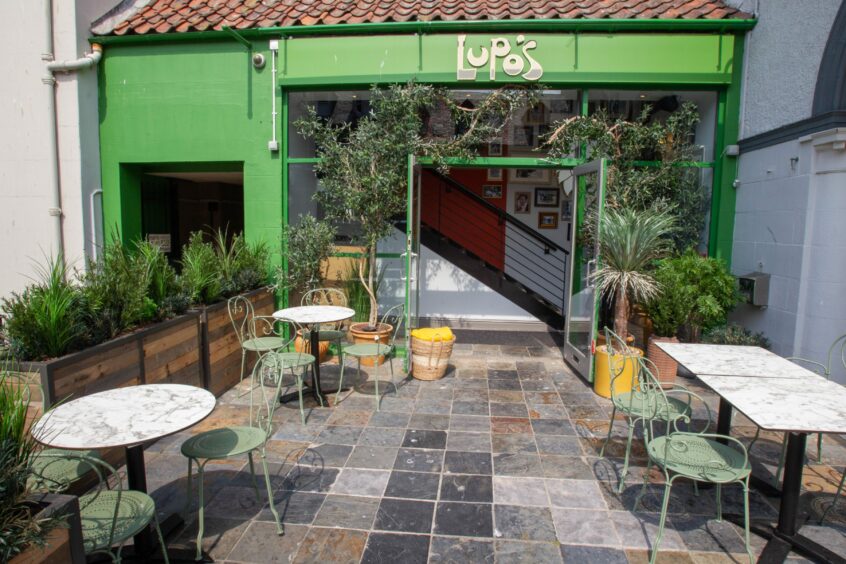
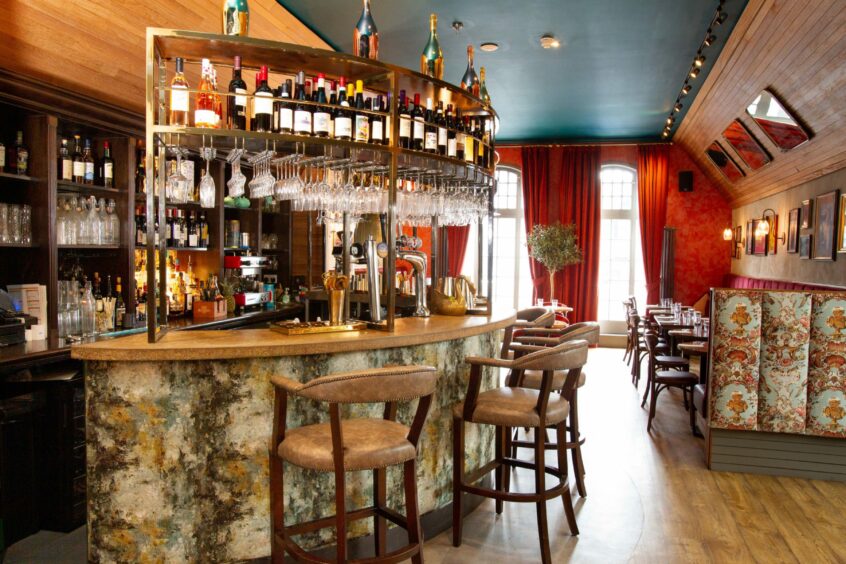
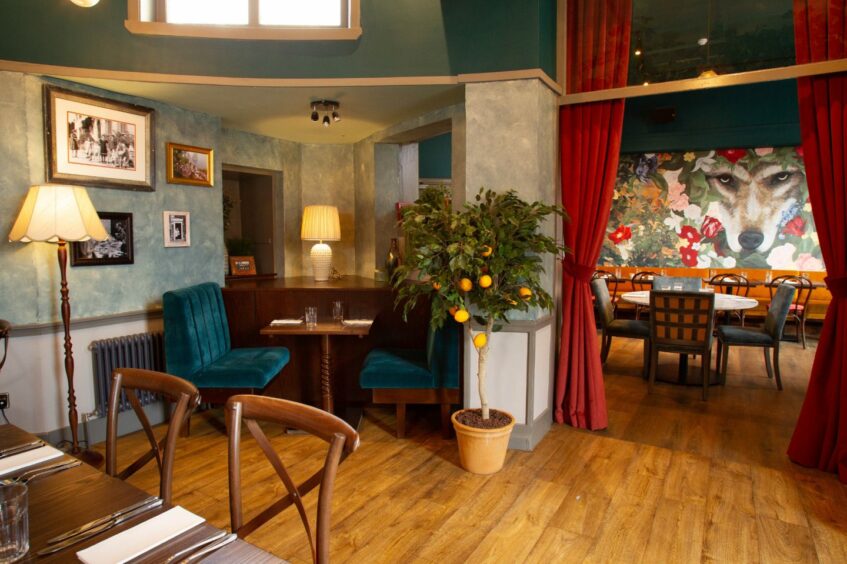
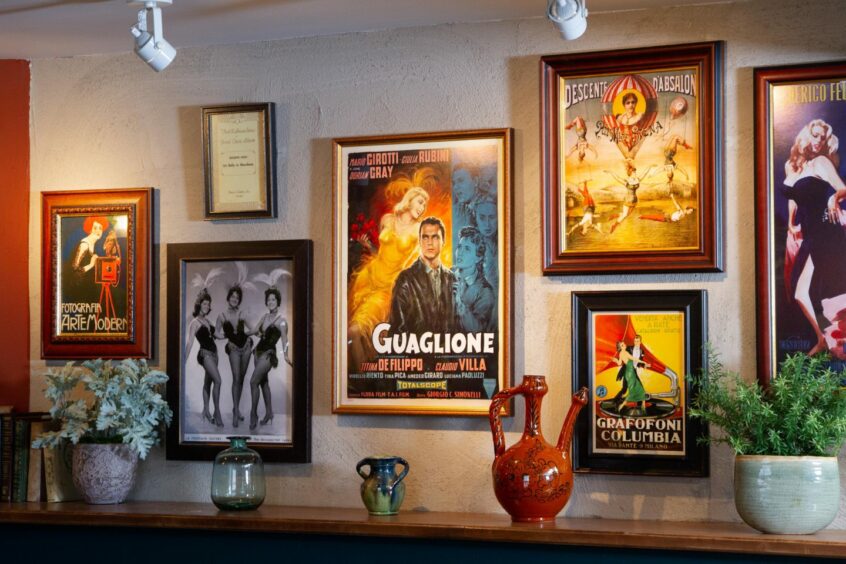
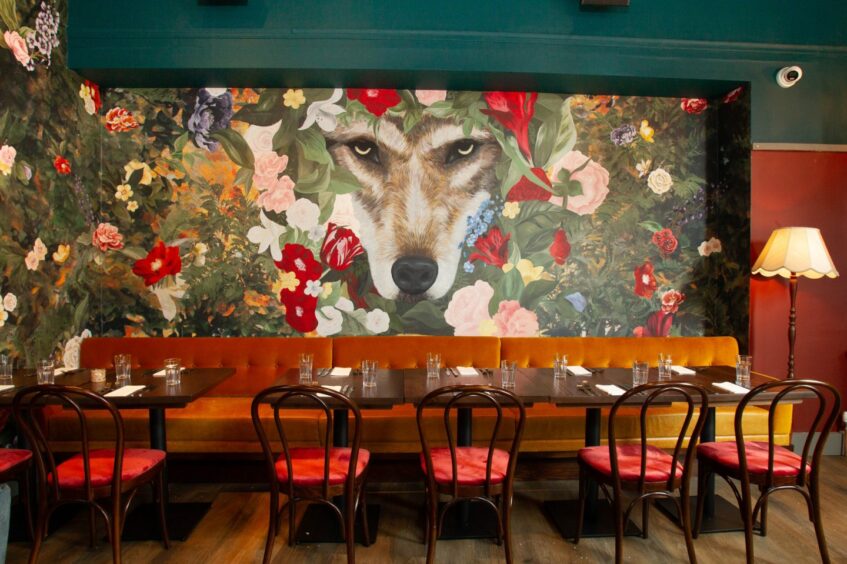
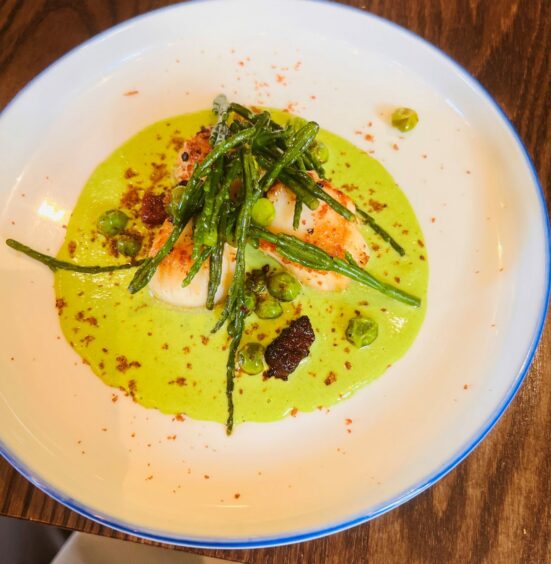
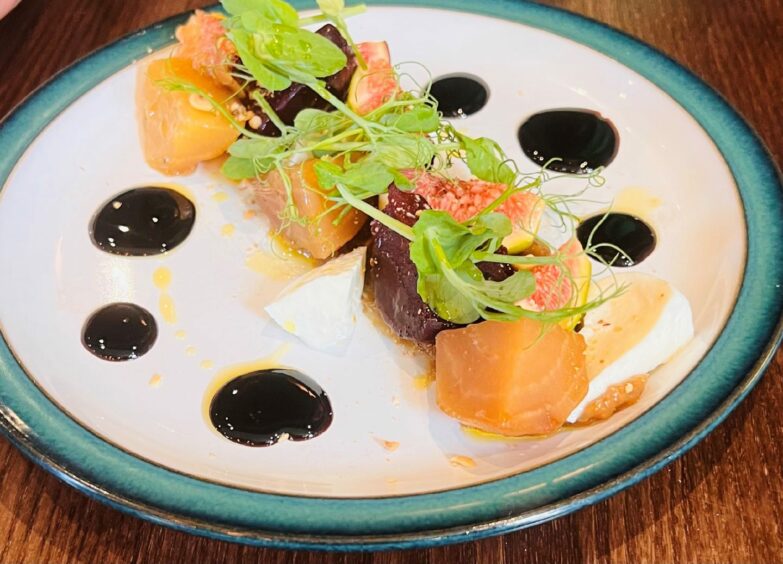
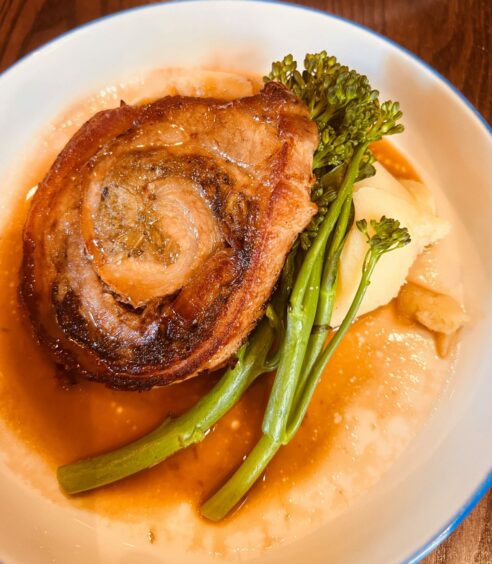
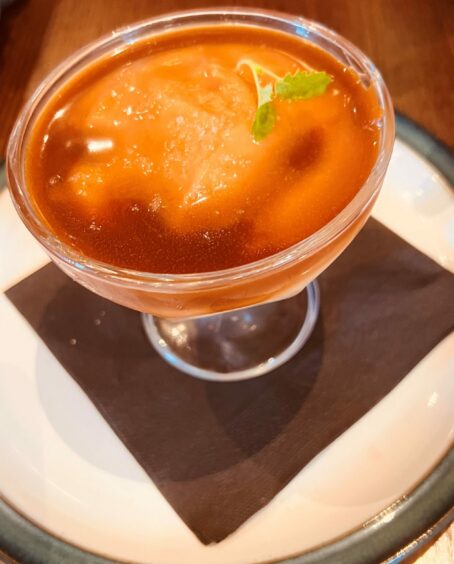










Conversation